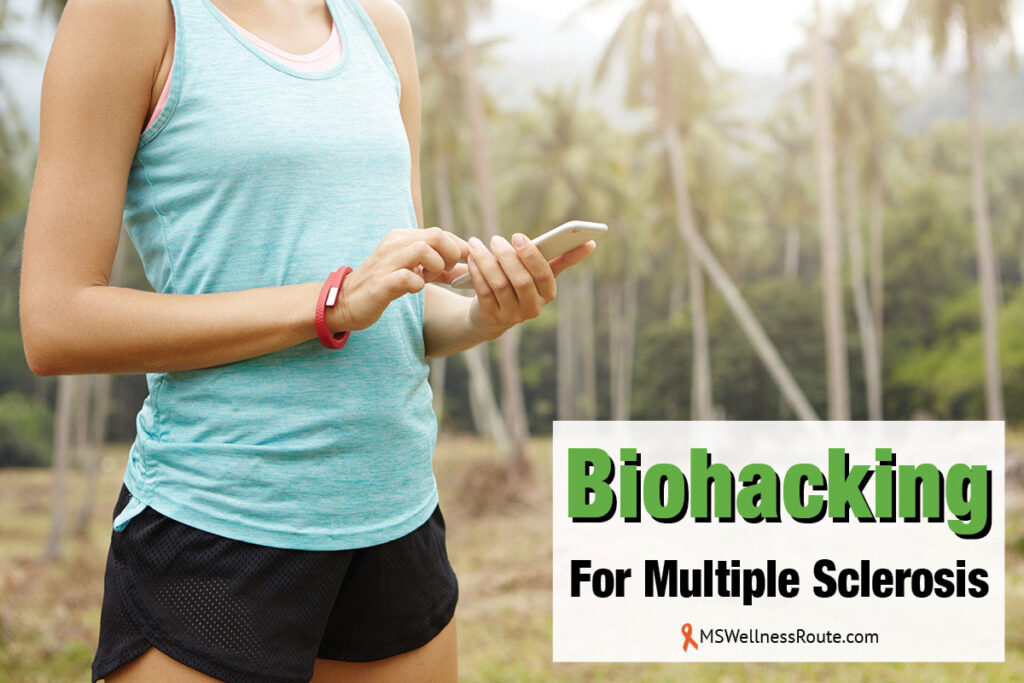
Have you ever heard the term – biohacking? Biohacking enhances the human body and mind using technology, science, and tools. A method for intentionally improving health through body, diet, and lifestyle changes.
The first time I heard the term “biohacking” I thought it was one particular thing. It wasn’t until I started looking into it that I realized I was already doing biohacking. Eating healthy and exercising are a form of biohacking. It’s basically anything you purposely do that will improve your well-being.
Biohacking Versus Alternative Therapies
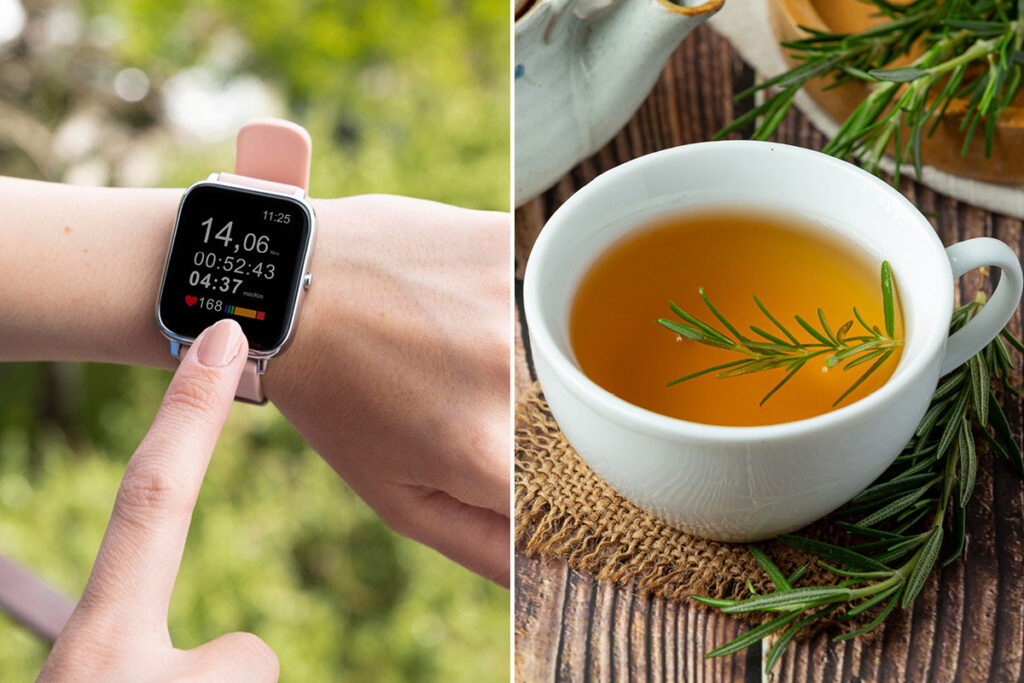
Image by Freepik / Image by jcomp on Freepik
Biohacking and alternative therapies (or alternative medicine) are similar but they do have differences. First, biohacking involves using various tools, technologies, and lifestyle interventions to improve physical and mental well-being. – It’s about trying things out on yourself and figuring out how to be the best version of yourself.
On the other hand, alternative therapies use unconventional or non-traditional approaches to healthcare. Some you may already be using and may not fall under mainstream medical practices.
While some biohacking practices can be considered alternative therapies, not all alternative therapies necessarily fall under the biohacking umbrella. Biohacking is all about getting scientific and data-driven, while alternative therapies cover a bunch of different and kinda out-of-the-box healing stuff.
Here are some alternative therapies:
- Acupuncture
- Aromatherapy
- Chiropractic care
- Energy healing practices like Reiki
- Essential oils
- Herbal remedies
- Hypnotherapy
- Massage therapy
- Medical marijuana
- Meditation
- Yoga
Types of Biohacking
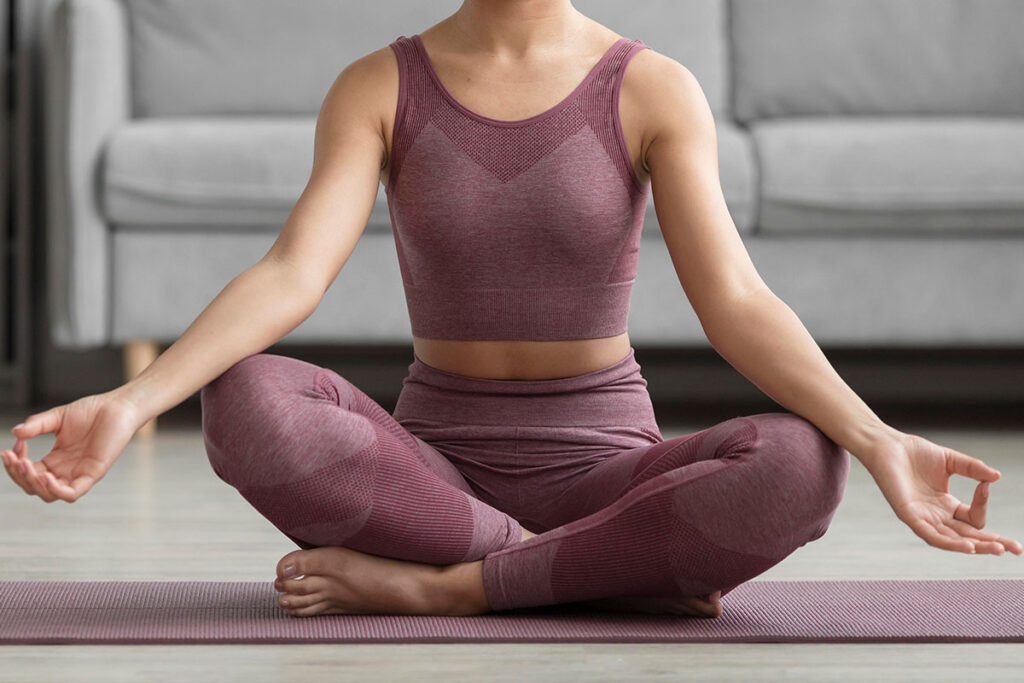
Image by Freepik
There are many forms of biohacking. As I mentioned earlier diet and exercise are a form of biohacking. So is sleeping well, counting your steps, and tracking your water intake. Below are some different biohacking techniques for people with multiple sclerosis (MS).
Below are examples of biohacking strategies that can improve MS symptoms. Whether it’s personalized strategies or cutting-edge techniques, there are many possibilities you can try. Find what works best for you to boost your well-being and supercharge your health journey.
Diet –
There are many diets for MS to choose from and I have been on many of them. What I discovered was, there is no perfect diet. Your best option is to choose a healthy diet that works best for you. Then focus on lowering your inflammation by eating lots of fruits, vegetables, herbs, and spices.
Foods to eat to reduce inflammation:
- Fruits
- Vegetables
- Herbs and spices
- Healthy oils
- Wild-caught fish
- Pasture-raised poultry (chicken, turkey, quail)
- Grass-fed and finished meat (beef, bison, wild-game)
Hydration –
Tracking your water intake is a form of biohacking because it improves your health. Unfortunately, people with MS tend to back off on their water intake due to bladder issues. However, staying hydrated is extremely important for your body to thrive.
Aim for eight 8-ounce glasses of water a day, or about 2 liters. Some apps can help you track your water or you can track it using a piece of paper. You can also track it directly on your iPhone using the Apple Health app.
To track your water intake using the Apple Health app on your iPhone:
- Open the Health app on your iPhone.
- Tap on the “Browse” tab (it’s at the bottom).
- Scroll down and select “Nutrition” or “Hydration” (depending on your iOS version).
- You should find an option to add your daily water intake. Tap on it and enter the amount of water you’ve consumed.
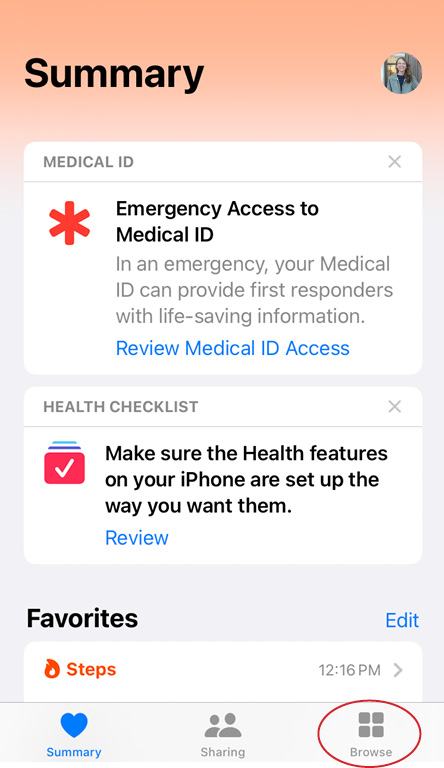
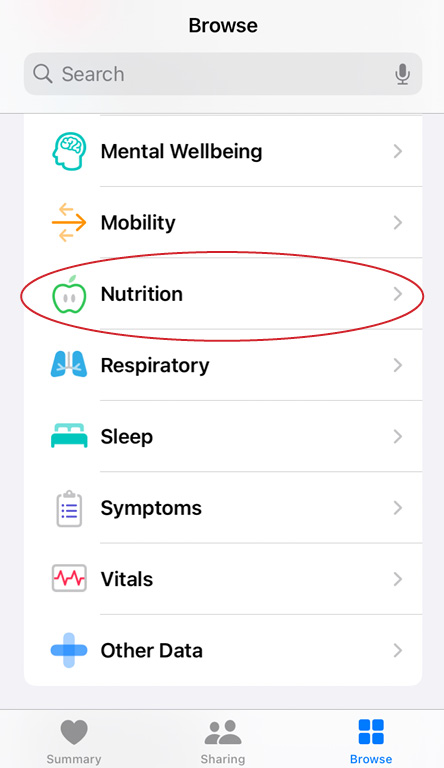
It tracks your water intake in milliliters (mL), if you want to change it to cups, pints (pt), or fluid ounces (fl oz) follow these steps (I use cups):
- Open the Health app
- Tap on the “Browse” tab (it’s at the bottom).
- Scroll down and select “Nutrition” or “Hydration” (depending on your iOS version).
- Tap Water
- Scroll to the bottom and tap Unit
- Choose your preferred unit of measurement
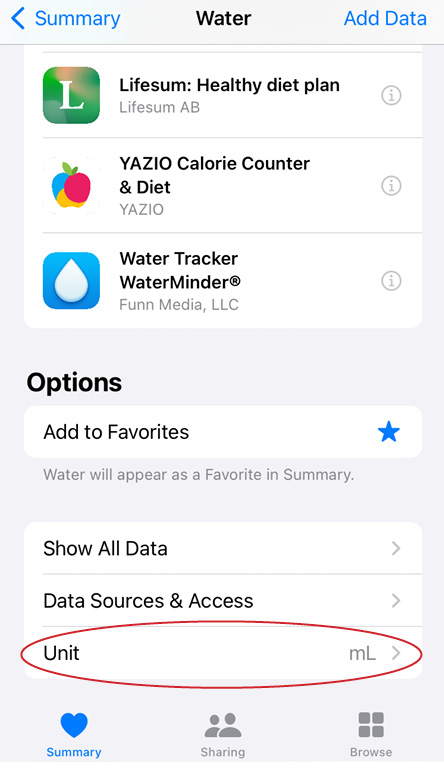
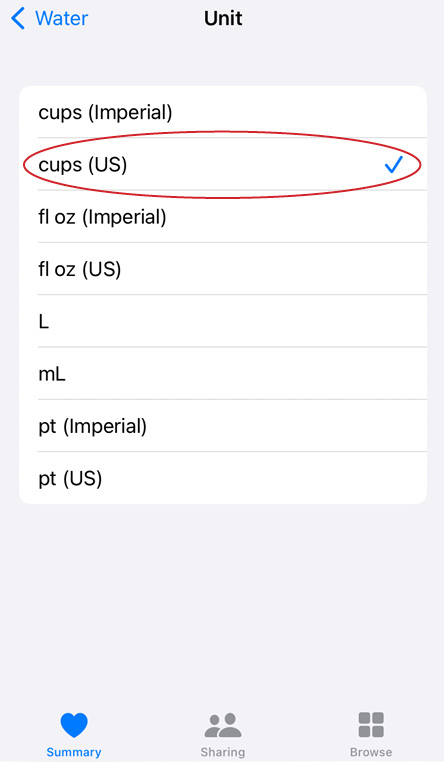
To add Water to your “Favorites” click Edit and scroll down to “Water.” Tap the star on the right side of Water.
Sleep –
Biohacking also includes your sleep habits and the amount of your sleep. Like hydration, you can also track your sleep habits.
Here are some tips for a better night’s sleep:
- A cool bedroom temperature is more favorable for better sleep.
- Avoid heavy meals close to bedtime
- Go to bed and wake up at the same time every day, even on weekends.
- Exercising in the morning will help you sleep later that night.
- Keep your bedroom dark, quiet, and cool. Consider using blackout curtains, earplugs, or a white noise machine if needed. I have an AirDoctor in my bedroom to clean the air and it’s perfect for white noise.
- Limit your water intake so you won’t have to make many trips to the bathroom during the night.
- Practice mindfulness and relaxation techniques such as deep breathing to calm the mind.
- Reduce exposure to blue light from screens at least an hour before bedtime. Consider using blue light-blocking glasses or enabling “Night Shift” mode on devices.
- Try calming activities before bedtime to signal your body that it’s time to wind down.
- Use sleep-tracking devices or apps to monitor and analyze your sleep patterns. This information can help you make informed adjustments to your sleep habits. Again, Apple has a sleep tracker on their Health app.
Exercise and Physical Activity –
Exercising and moving is extremely important for people with MS. It keeps you strong and mobile and it helps fight depression. You can start by making a plan, setting goals, and tracking your progress.
Biohacking tips for exercising:
- Add exercises that focus on improving balance.
- Engage in exercises that promote neuroplasticity.
- Include resistance training exercises to build and maintain muscle strength.
- Increase your movement every day.
- Control temperature sensitivity with cooler exercise environments or a cooling vest.
- Use trackers or apps for monitoring exercise, setting goals, and tracking daily activity. This can provide motivation and insights into your overall health.
- Use handrails, assistive devices, or modified machines for safer and more accessible exercises.
- Yoga or tai chi enhances flexibility, balance, and mindfulness.
- Water-based exercises, such as swimming or water aerobics.
Unlock Your Potential

There are many different biohacking and alternative therapies available for people with MS. Since they aren’t extensively studied, check to see what works best for your needs. Ultimately, it’s a way to improve your health for the better.
Here are some different biohacking ideas to try:
- Devices such as fitness trackers, smartwatches
- Cooling therapy, also called therapeutic hypothermia
- Light therapy such as red or near-infrared light
- Pulsed Electromagnetic Field Therapy (PEMF)
Here are some biohacking approaches I use:
- Compression boots to help with circulation
- Health app on my iPhone to track my steps and water intake
- Infrared light for relaxation, reducing muscle stiffness, and lower inflammation
- OsteoStrong to build stronger bones
- Taopatch is a wearable device that uses nanotechnology and light to improve MS symptoms
- Vibration plate for bone health, balance, muscle strength, and blood flow
To learn more about Taopatch read: Taopatch For Multiple Sclerosis Review
Biohacking for MS
Choosing a biohacking approach can enable you to optimize your overall well-being. Biohacking offers many possibilities to improve your quality of life. Keeping track of your improvements gives you the boost to keep going.
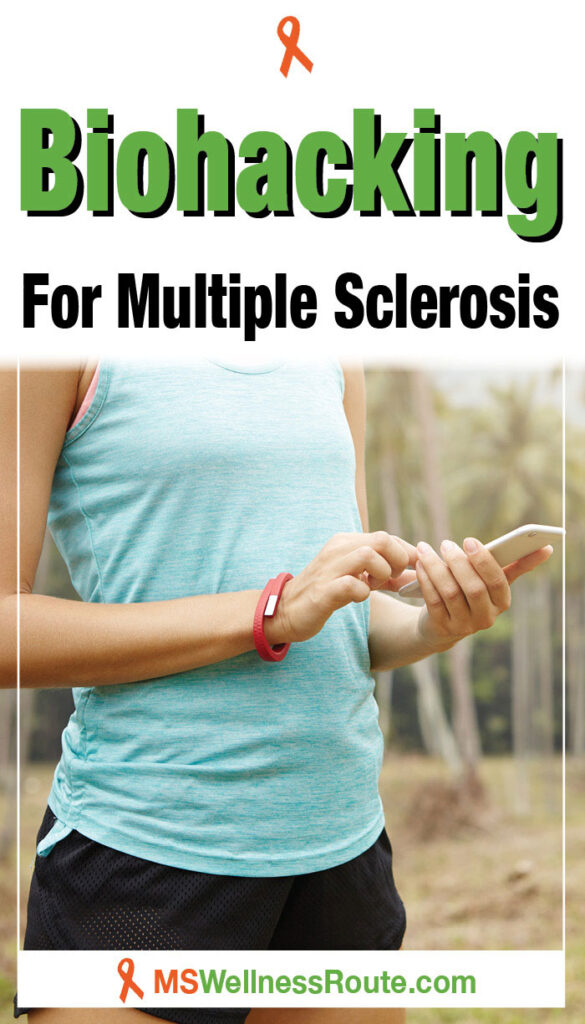
Image by wayhomestudio on Freepik
Biohacking for MS





